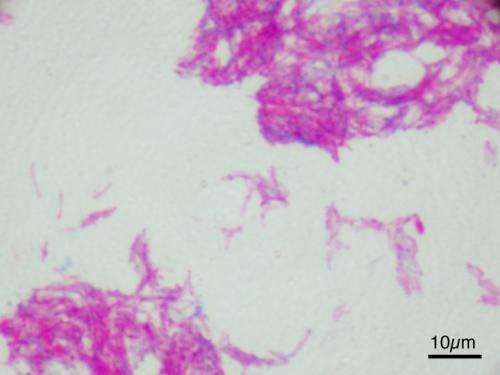First national model for Bovine TB calls for more focus on cattle

In a study published in Nature this week, a team of researchers based at the University of Warwick has produced the first national model to investigate the bovine TB spread.
The results derived from the model in the Nature paper, entitled "A dynamic model of bovine tuberculosis spread and control in Great Britain", demonstrated that the majority of herd outbreaks are caused by multiple transmissions routes - including failed cattle infection tests, cattle movement and reinfection from environmental reservoirs (infected pastures and wildlife). The study suggests that improved testing, vaccination of cattle and culling all cattle on infected farms would be the most effective strategies for controlling the disease.
Based on a study of cattle and the causes of bTB in Great Britain the model sought to ascertain how and why the epidemic has grown over the past 15 years. Using Animal Health and Veterinary Laboratories Agency and Defra data, the researchers developed a mathematical model that incorporated both within-farm and between-farm bTB transmission.
The model proposes that whilst badgers form part of the environmental reservoir they only play a relatively minor role in the transmission of infection.
"Our model offers a dispassionate, unbiased view of the spread of bTB through the cattle industry of Great Britain" says model co-author Professor Matthew Keeling, from Warwick's School of Life Sciences and Department of Mathematics. "The model is based on the recorded pattern of positive and negative tests and uses the known movement of cattle around the country. We aim for it to provide policy
- makers with the best evidence possible from which to make decisions relating to bTB and to contribute to the ongoing discussions on this sensitive issue".
The model allowed the researchers to tease apart how different routes involved in transmission interact and overlap. "By using the most recent data our model predicts that it is most likely both cattle movements and the local environment that are driving the front of the epidemic. Imperfect cattle skin tests contribute to the spread by delaying the time until infected herds are detected for the first time and incorrectly identifying herds as clear of infection", says co-author Dr Ellen Brooks-Pollock of the University of Cambridge.
For the researchers one of key results from the model is the large variation in what happens to farms once they are infected. "We found that the vast majority of infected farms don't spread the infection to any other farms before they clear infection themselves. Only a small number of farms spread the infection and they can cause the majority of new cases", argues Dr Brooks-Pollock.
The researchers argue that the findings are essential for improving the targeting control measures. If infected farms can be identified and caught early then it might be possible to make substantial progress in tackling the epidemic.
"The model we are putting forward can be used to address several potential control methods – but there is no single panacea." says Professor Keeling. "All controls have advantages, disadvantages and would be problematic and costly to implement. However, we find only three controls have the power to reverse the current increase in cases; more frequent or more accurate testing, vaccination of cattle and culling all cattle on infected farms".
The control measures the researchers investigated were designed to be 'idealised' control options to understand what measures in theory could stop the increasing epidemic. "We didn't consider the practicalities or economics of implementing control measures", says Dr Brooks-Pollock "that needs to be the subject of further work".
"We believe the way forwards is to determine clearly defined strategic goals with appropriate costs and benefits" argues Professor Keeling. "Models such as ours can then be combined with economic analysis to assess a wide range of future control options".
More information: A dynamic model of bovine tuberculosis spread and control in Great Britain, Nature, dx.doi.org/10.1038/nature13529
Journal information: Nature
Provided by University of Warwick

















